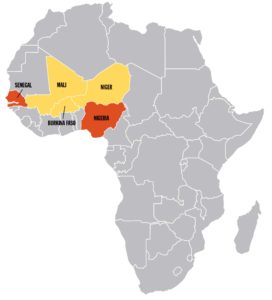Latest News – The Horse

How to Teach Your Horse to Behave in Cross-Ties
Does your horse refuse to stand still in the cross-ties? An equine behavior expert shares how to instill good grooming manners in a young horse or curb existing rude behavior in the cross-ties.

Tight Spaces: Horse Farm Design for Limited Acreage
When you’re constructing a horse farm and have limited land, design and layout are critical to maximizing your time and resources. Download this free report for tips on how to design a functional farm on what land you have.

USEF: Positive CBD Tests in Horses Will Result in Rule Violations
The USEF said that, in both natural and synthetic forms, CBD is likely to affect a horse’s performance due to its reported anxiolytic (anxiety-reducing) effects.

Diagnosing Performance Problems in Western Horses
A practitioner reviews the comprehensive approaches he takes to home in on performance issues in Western horses, including physical exams and advanced imaging techniques

Equine Laminitis: Turning Over New Leaves
Researchers and veterinarians around the world strive to learn more about the lamellae and have made scientific advances in laminitis diagnosis, treatment, and prevention over the past several years. Here’s what we know.

Uterine Tube Obstruction in Mares: Post-Treatment Pregnancy Rates
Uterine tube obstruction, though rare, can cause subfertility in mares. While veterinarians have several methods for treating this issue, it’s been unclear how they affect a mare’s future fertility. So researchers recently conducted a study to find out.

Are Peppermints Spoiling My Horse’s Diet?
Will giving my horse peppermints offset the hard work we’re doing to help her lose weight?

EHV-1 in Arizona: Two Unrelated Cases Confirmed in Maricopa County
Two Quarter Horse geldings exhibited neurologic signs before testing positive for EHV-1 on May 7.

Horses With Fever But No Cough, Nasal Discharge: Consider Tick-Borne Disease
When a horse spikes a fever without the nasal discharge and other respiratory signs you’d expect to see with an infectious disease, the potential causes could be vast. In some parts of the country, a tick-borne disease could be a culprit.

EMS Heritability High in Morgans, Welsh Ponies
Researchers have learned that genetics have more influence on a horse’s risk of developing EMS than previously thought.

Vet: Consider Lesser-Known Parasite in Neuromuscular Disease Cases
Some horses with neuromuscular disease could have a protozoan parasite Sarcocystis fayeri in their skeletal muscles, researchers learned.

Healthy Broodmares Can Shed EHV-1 Vaginally
Researchers say this might be a bigger source of environmental contamination than previously thought.

Celebrating International Donkey Week
In honor of International Donkey Week, May 6-11, 2019, we asked readers to share photos and stories of their favorite long-eared equines.

Colic: It’s All Academic Until it Happens to You
Journalist Pat Raia has written about horse health and welfare issues for years, but she learned it’s a whole different ballgame when your own horse is the patient. Here’s what she experienced when her horse colicked recently.

Thousands of Working Equids Die in Influenza Outbreak
Official disease notification from Senegal and Nigeria indicate more than 40,000 cases have resulted in more than 3,000 equid deaths since mid-December.

Stubborn as a Donkey?
One behavior expert explains the differences in behavior between donkeys and horses.











